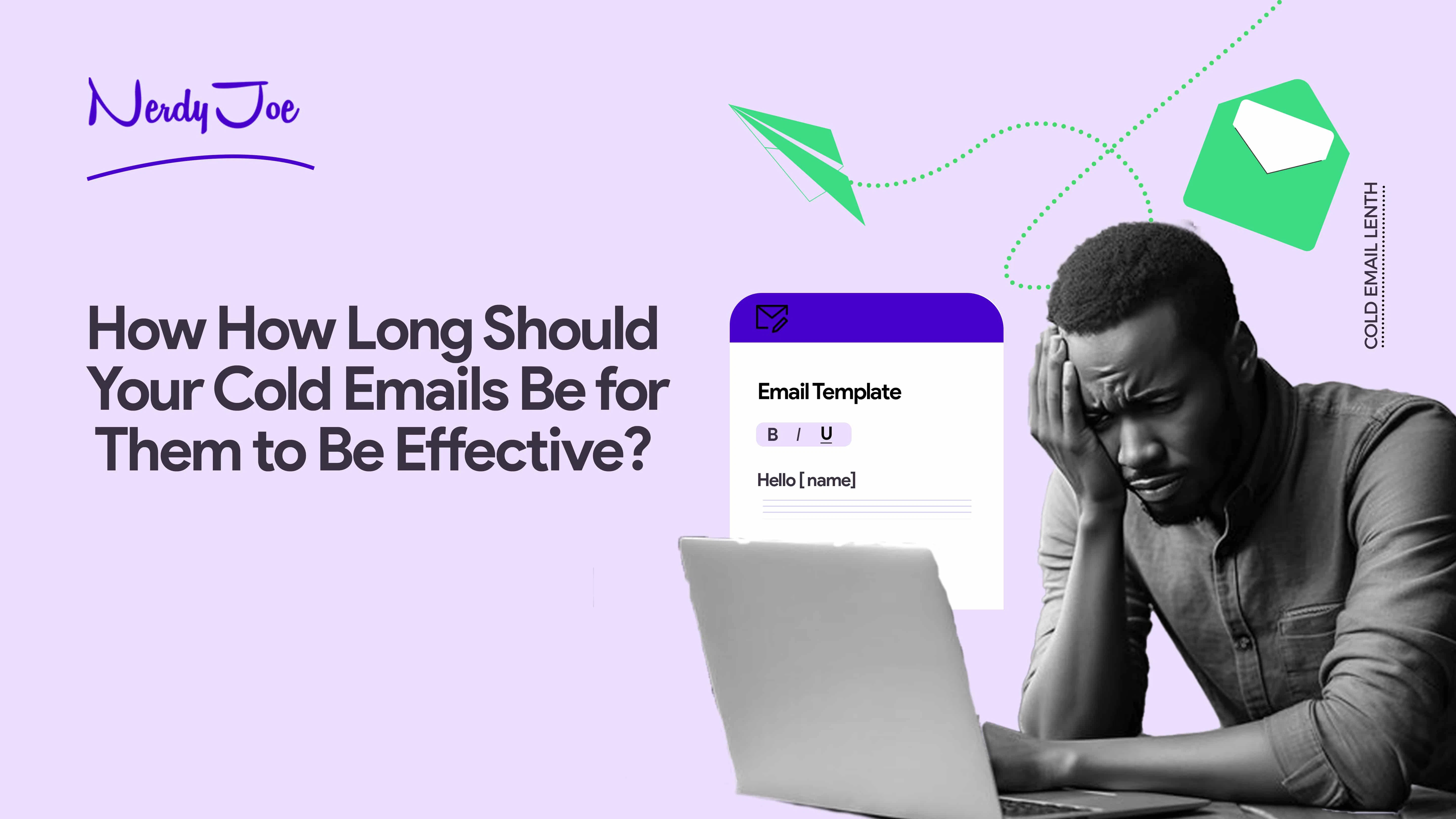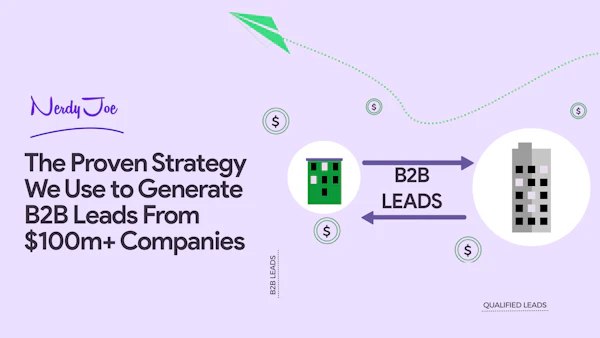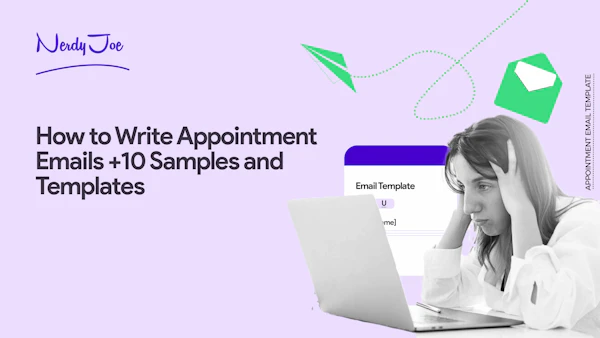So, how long should cold emails be for them to be effective? Here are the short answers to this question.
Conventional wisdom says the shorter, the better.
Twitter Gurus say cold email should be no more than 3 paragraphs. They should adopt the F shape. And that cold email subject lines should be no longer than 4 words and that the best subject line ever is "quick question".
Top-ranking articles on Google say between 50-200 words.
Our cold email lead generation experts at Nerdy Joe say it depends.
Satisfied yet?
I’m sure you’re not.
The truth is, the conventional wisdom is quite right. The shorter you can make your cold emails, the easier you’ll make it for your recipients to engage with them.
At the same time, adding value and substance (the very attributes that compel people to engage and buy) to your cold emails will require you to write longer cold emails.
Case in point, our cold email lead generation experts at Nerdy Joe write longer cold emails, up to 500 words long, and we still get incredible results for our clients.
There are a lot of controversies about the ideal cold email length for it to be effective and generate maximum engagement. In fact, there can be as many opinions as practitioners.
In this article, we’ll help you understand how you should write your cold emails and give you tips on how long you should make them based on your needs and business goals.
Let’s get started.
Note: Struggling to get replies or book meetings with prospects that fit in your ICP? We’ll help you get 6 SQLs or book 6 meetings with prospects that are ready to buy for only $999/month. Book a 15-minute consultation now.
What should the ideal length of a cold email be?
So, what’s the ideal length for cold emails to be effective? Here is what you need to know to make a decision for yourself.
What the conventional wisdom says: The Shorter, the Better
There’s a saying that “less is more,” and the statement certainly holds water in the realm of cold emails. According to conventional wisdom, your cold email should be as short as possible—no fluff, no unnecessary jargon, just straight to the point.
Whoever you ask how long your cold email should be will tell you this, the shorter, the better. They can argue about the actual word count based on your needs with the email, but they’ll always advise you to keep your cold email the shortest it can be.
The idea is that people are busy; their inboxes are swamped, and they don’t have time to read a novella from someone they don’t know. So, this logic dictates that cold emails should be succinct and laser-focused.
What the data says: Between 50-200 words
According to the Woodpecker Blog, cold emails should be short, 2-5 sentences of no more than 200 words in total. A similar study by Constant Contact corroborated this by suggesting that the length of the best-performing cold emails is 20 lines of text — which translates to about 200 words.
Interestingly, Boomerang found in a different study that the best-performing cold email length is between 50 to 125 words. Boomerang’s data showed that the response rate for this specific word count margin was the best at more than 50% at that length.
Both word count ranges seem to balance things and give enough room to write a good cold email. The data also teaches us that cold emails that adhere to this word count range tend to have a higher response rate compared to those that are either too short or too long.
What our cold email copywriting experts at Nerdy Joe say: Well, It depends
At Nerdy Joe, we believe that the ideal length of a cold email is not set in stone; rather, it depends on various factors, such as your target audience, the complexity of your product or service, and the stage of your relationship with the recipient.
For instance, if you’re reaching out to high-level executives, concise, to-the-point emails work best, given their limited time. On the other hand, if your product requires a bit of explanation or if you’re targeting a more technical audience, a longer email is more appropriate.
Also, the key to a successful cold email is not just its length but its ability to engage the reader and provoke action. Plus, brevity doesn’t always mean clarity. So, our experts suggest adopting a flexible approach: Crafting an email within the 50-125 word range and then tailoring it according to the specific needs and expectations of your recipient.
How to write cold emails with the right balance of quality and quantity
Striking the right balance between value, quality, and word count in a cold email is an art, and like any art, it requires practice and technique. Let’s explore some actionable steps to achieve this balance.
1. Use a clear and logical structure
The body of your cold email should succinctly pack your offer and still guide the reader smoothly from the cold email subject line to the email sign-off phrase. That’s because a dense, haphazard email will lose a reader, regardless of its length.
Even when you write a long cold email, keeping it in a clear and logical format makes it easy on the eye, and your recipients will be more like to read it or skim it through and get a better comprehension. Here are some tips you can use to do this:
Problem-action-benefit: This is the best way to write your cold email, especially if you’re looking to get an action from your recipient. Begin by identifying a problem or pain point the recipient might be facing, propose an action to solve that problem (potentially your offer), and then highlight the benefits of taking that action.
One main idea per paragraph: Long, winding paragraphs are hard to read. People will quickly lose interest and archive it. Even if you write a long cold email, keeping each paragraph sweet and focused on a single idea will make your email skimmable and more engaging.
Use visual aids: Break up the text and novel structure of your email. Whenever appropriate, use bullet points, numbered lists, or even infographics to break up text and make your email more digestible.
Make each sentence and paragraph earn its keep
Marketers often say the purpose of any sentence in your cold email is to get the recipient to read the next one — well, it’s true. Ditch all the pop culture jokes or laureate writing styles and focus on what matters.
Understand that if your recipients have read your cold email and say that it’s well-written or fun to read, then you failed. The goal of your cold email is to get them to accept your offer, grant your request, or engage with your call to action (in whatever way you need them to).
So, your word choice needs to be impeccable. Each sentence in your cold email needs to serve a purpose — whether it’s providing information, creating engagement, or prompting action.
If a word, sentence, or paragraph doesn’t add any value to the message you’re trying to get across, consider hitting the backspace. This will help you achieve conciseness without sacrificing quality.
2. Keep it concise but not too short
While you don’t want to write a novella, being too succinct can also be a problem. You don’t want your cold email to feel rushed or incomplete — that’s basic and part of being professional in your outreach. It’s also the main reason why “Quick question?” cold emails don’t work.
Aim for the sweet spot where you provide enough information to be credible and persuasive but not so much that you lose the reader’s interest. As we discussed, the 50-200 word range is a good starting point, but don’t be afraid to adjust based on your message and audience.
3. Provide enough information to establish credibility and interest
Your email should include enough substance to establish your credibility and incite the recipient’s interest in a few words. Show, don’t tell. Doing so will save you a lot of words you’d otherwise need to establish credibility and interest.
So, mention accolades, notable clients, testimonials, or statistics that support your claims.
4. Run A/B testing campaigns
Not every strategy will work for every audience. At the end of the day, what we, or any other blog, recommend on the ideal cold email length won’t matter if it’s not aligned with your target audience’s unique preferences.
That’s why anytime we onboard a new client, we don't start writing cold emails based on preset formulas. We always set up their domains and kick things off by running A/B testing campaigns. That’s how you figure out what will work best for the audience and double down on it. And part of it is figuring out the acceptable word count.
So:
Try different approaches and word count: Craft two versions of your email – one shorter, one longer, or with different structures — to see which one resonates more.
Analyze and tweak: Use metrics like open rate, click-through rate, and response rate to gauge which version is more effective. Adapt accordingly for future campaigns.
Why you should focus on substance and value more than the word count
Now, we want you to look beyond numbers. Forget about how long should a cold email be and focus on logic. Obsessing over the word count will distract you from what’s really important: delivering quality content that offers real value to the recipient.
Cold email marketing works in almost the same way as sales emails. When you focus too much on sticking within a specific word range, you run the risk of truncating your message or diluting its impact.
For instance, an attempt to fit into a 50-word boundary will force you to cut corners. Your email will feel rushed and leave out information that could have convinced your prospect to engage.
On the flip side, stretching to reach a higher word count can introduce unnecessary fluff or jargon, causing your reader to lose interest or miss the point. So, what do you do?
To be honest, it doesn’t matter how long the cold email is. What truly captures a reader’s attention is the relevant offer and the value you bring to the table.
So, ask yourself the following questions:
Are you targeting the right person with the offer?
Are you solving a problem they’re facing?
Are you offering a solution that can make their life easier?
When your email focuses on providing real benefits, the recipient is more likely to engage, irrespective of how long or short the email is. Value begets interest, and interest is the first step toward action. That's why personalized cold email campaigns are always successful.
Key takeaways
Studies on the optimal email length suggest that an effective cold email typically falls within the 50-200 word range. This range balances brevity with substantial content, leading to better engagement rates.
What works for one segment of your audience may not work for another. If you’re targeting busy CEOs, a crisp, concise, and short message is best. But if you’re reaching out to an audience or a product with technical details, then a slightly longer, more informative cold email will be more effective.
One of the best cold email strategies is that the success of a cold email doesn't hinge solely on its word count, but on the value and relevance it offers to the recipient (personalized cold emails). Prioritize content quality and the message’s relevance over the recommended ideal word count.
If you’re ready to elevate your cold email game and open doors to opportunities previously deemed unreachable, we are here to help. We’ll craft the best cold email copy that doesn't just land in inboxes—it converts leads into loyal customers.
Note: Struggling to get replies or book meetings with prospects that fit in your ICP? We’ll help you get 6 SQLs or book 6 meetings with prospects that are ready to buy for only $999/month. Book a 15-minute consultation now.







